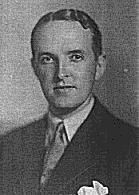HASH HISTORY
Hashing originated in December 1938 in Kuala Lumpur, Selangor, then in the Federated Malay States (now Malaysia). A group of British immigrants began meeting on Friday evenings prior to the war (1938-1941), but switched to Monday evenings (starting in 1946) to run, in a fashion patterned after the traditional British game of hare and hounds, where one or two “hare” players scatter a trail of cut paper for the “hounds” to track. Apart from the excitement of chasing the Hare and finding the trail, Harriers reaching the end of the trail would partake of beer, ginger beer, and cigarettes. With hash names in parentheses, the original members included Albert Stephen Ignatius Gispert (“G”), Cecil Lee, Frederick Thomson (“Horse”), Ronald Bennett (“Torch”), Eric Galvin, H.M. Doig, and John Woodrow.
A. S. Gispert suggested the name “Hash House Harriers” after the Selangor Club Annex, where several of the original hashers lived and dined, known as the “Hash House”. The “Hash House” got its name for “its hodgepodge of edible servings being passed off for food”. The term hash was used as an old British slang for “bad food”.
Hashing died out during World War II, shortly after the Invasion of Malaya, but was restarted in 1946 after the war by several of the original group. A. S. Gispert was killed on 11 February 1942 in the Japanese invasion of Singapore, an event commemorated by many chapters by an annual Gispert Memorial Run.
After World War II, in an attempt to reorganize in the city of Kuala Lumpur, hashers were informed by the Registrar of Societies that since they were a “group”, they would require a constitution. The objectives of the Hash House Harriers as recorded on the club registration card dated 1950 are:
- To promote physical fitness among our members
- To get rid of weekend hangovers
- To acquire a good thirst and to satisfy it in beer
- To persuade the older members that they are not as old as they feel
In 1962, Ian Cumming founded the second chapter in Singapore. Chapters are commonly called Kennels, following in tradition to similar Hound & Hare clubs. The idea spread through the Far East and the South Pacific, Europe, and North America, expanding rapidly during the mid-1970s.
At present, there are almost 1500 chapters in all parts of the world, with members distributing newsletters, directories, and magazines, and organizing regional and world hashing events. As of 2003, there are even two organized chapters operating in Antarctica.

Albert Stephen Ignatius Gispert (“G”)
